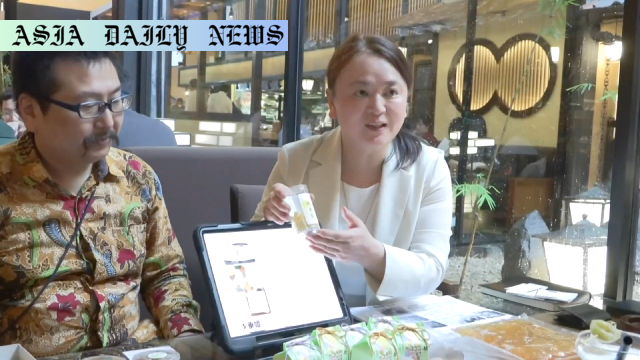Japanese sweets expand horizons: Hayashi Mayumi explores overseas markets with monaka and plum wine jelly.
- Key Point 1: The food fair in Jakarta showcased Japanese flavors, attracting new potential markets.
- Key Point 2: Hayashi Mayumi, a quake-affected sweets shop owner, shared signature products like monaka and plum wine jelly.
- Key Point 3: Indonesian demand for authentic Japanese sweets shows growth potential.

Introduction to Japanese Sweets Overseas
The recent food fair in Jakarta became a gateway for Japanese delicacies to find new admirers in Indonesia. This showcase not only introduced local specialties from Toyama Prefecture, such as dried seafood and udon noodles but also marked the beginning of a potential expansion for Japanese sweets into the Southeast Asian market. Among the exhibitors was Hayashi Mayumi, a resilient businesswoman whose family-run sweets shop faced a devastating earthquake on New Year’s Day last year in Japan’s Noto Peninsula.
The Story of Resilience
For Hayashi Mayumi, reopening her shop after the earthquake was more than a rebuilding process; it was about preserving tradition and looking forward to new opportunities. Her shop specializes in monaka, a delightful treat made from rice wafers filled with red bean paste, and a unique plum wine jelly infused with local flavors. These traditional sweets became a highlight at the food fair, capturing visitors’ attention and attracting interest from Indonesian buyers eager to bring authentic Japanese flavors to their restaurants.
Growing Demand for Japanese Flavors
In recent years, the Japanese food industry has focused on expanding its reach to international markets, capitalizing on the growing global fascination with its culinary heritage. Indonesia, with its vibrant and diverse food culture, presents both a challenge and an opportunity. Reports from the fair indicate a rising interest in Japanese delicacies, particularly sweets, as buyers look to diversify their offerings and cater to evolving consumer tastes.
The Economic Opportunity
Exporting Japanese sweets to Indonesia has significant economic potential. Not only does it give small business owners like Hayashi Mayumi a chance to rebuild and grow, but it also strengthens Japan’s culinary diplomacy. As more Indonesian diners become acquainted with the diverse flavors of Japanese sweets, the market demand could drive a steady increase in exports, benefiting producers and creating a positive ripple effect across the industry.
Challenges Ahead
Despite the optimism, entering a new market like Indonesia is not without its hurdles. Cultural and taste differences, as well as logistical challenges, can pose obstacles for Japanese food producers. Ensuring consistent supply, aligning products with local preferences, and overcoming pricing competitiveness will be critical for sustained success. By continuing to emphasize quality and authenticity, producers can carve out a niche amidst fierce competition.
Conclusion
As Hayashi Mayumi and other Japanese food producers take steps towards expanding their presence in Indonesia, they embody resilience and innovation. Their journey highlights not only the appeal of Japanese culinary heritage but also the enduring spirit of those determined to weather challenges and adapt to new opportunities. The growing Indonesian market holds significant promise for Japanese sweets, paving the way for a flourishing cultural and economic exchange.



Commentary
Reflecting on Cultural Exchange Through Food
The story of Hayashi Mayumi resonates deeply as a testament to resilience and the universal appeal of food as a cultural bridge. Her journey from rebuilding post-earthquake to entering the vibrant Indonesian market is nothing short of inspiring. It highlights how challenges, no matter how devastating, can be transformed into opportunities with determination and a forward-thinking mindset.
The Universal Language of Flavor
Food has always been a universal language, bringing people together across borders and cultures. Japanese sweets, with their intricate flavors and delicate presentation, have a unique ability to captivate international diners. In countries like Indonesia, where culinary richness is deeply embedded in the culture, the fusion of local preferences with Japanese traditions holds immense potential for growth and mutual appreciation.
Navigating the Path Ahead
While the enthusiasm from the Jakarta food fair paints a promising picture, success in a new market is rarely linear. It requires deep understanding, adaptability, and a commitment to quality. Hayashi’s journey to Indonesia reminds us of the importance of perseverance and innovation in overcoming hurdles.
Conclusion
Hayashi Mayumi’s efforts and the growing global interest in Japanese sweets symbolize how culinary traditions can transcend borders. As markets like Indonesia continue to embrace diverse flavors, the future of Japanese sweets seems more promising than ever.